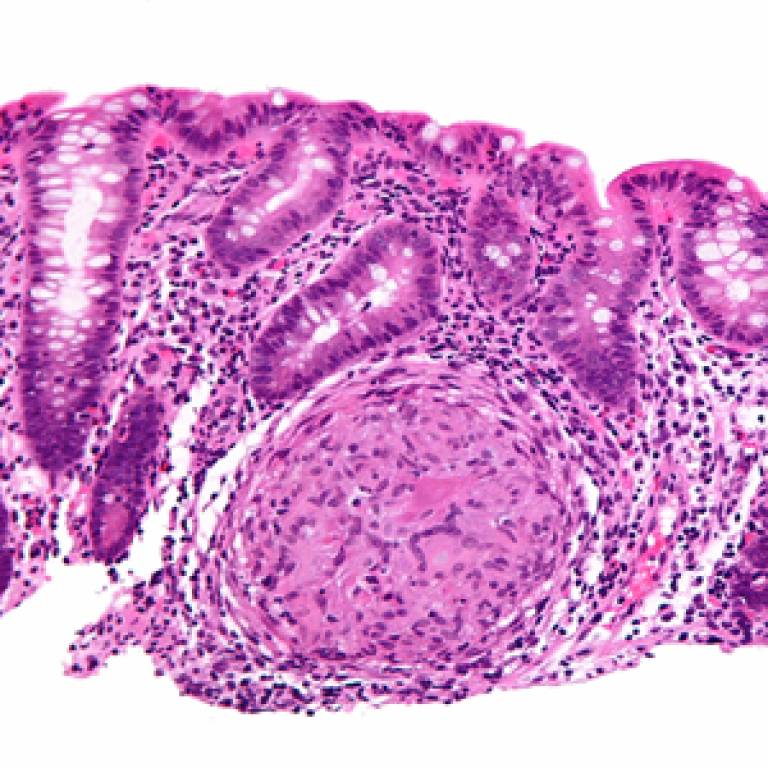More than two hundred genes identified for Crohn's Disease
14 December 2012
More than two hundred gene locations have now been identified for the chronic bowel condition Crohn's Disease, in a study that analysed the entire human genome.

Published today in The American Journal of Human Genetics, scientists at UCL have devised a new method for identifying and mapping gene locations for complex inherited diseases. Using this method, they have been able to identify a large number of additional genes for Crohn's Disease, making a total of more than 200, which is more than have been found for any other disease. For example, there are just 66 known gene-regions for type 2 diabetes.
Crohn's Disease, a type of Inflammatory Bowel Disease, is a chronic illness of complex origins affecting approximately 100 to 150 people per 100,000. Understanding the genetic component of such complex diseases is central to explaining patients' symptoms and improving treatment.
Despite Crohn's having a large genetic component, this has been hard
to dissect. This is partly due to the large number of genes involved,
their complex interactions with environment and the spectrum of clinical
presentations. As a result, many scientists have been focusing on ever
larger cohorts of patients under the impression that larger data sets
data will give better results.
The discovery of so many gene locations for Crohn's Disease is an important step forward in understanding the disease, which has a very complicated genetic basis. We hope that the method we have used here can be used to identify the genes involved in other diseases which are similarly complex, for example different cancers and diabetes.
Dr Nikolas Maniatis
This study shows how studying smaller but better defined groups can lead to a better understanding of how complex diseases are inherited, and paving the way for personalised treatment.
Dr Nikolas Maniatis, senior author from the UCL Research Department of Genetics, Evolution and Environment, said: "The discovery of so many gene locations for Crohn's Disease is an important step forward in understanding the disease, which has a very complicated genetic basis. We hope that the method we have used here can be used to identify the genes involved in other diseases which are similarly complex, for example different cancers and diabetes."
The research team used UK data provided by the Wellcome Trust Case
Control Consortium (WTCCC), which includes genetic information of 1698
CD patients. The team's results were also replicated using independent
US data provided by the American National Institute of Diabetes and
Digestive and Kidney Diseases (NIDDK), which contains genetic
information of 813 patients with CD.
Dr Maniatis said: "The discovery of so many additional genes for Crohn's and much more precise locations within the gene-regions was partly because of the highly informative genetic maps of the human genome that we have used in our approach to locating the genes involved."
He added: "The success of our work was also attributable to the fact that we were able to subdivide patients by disease presentation. Data stratification can help sort out the genetics, and before long genetics will be able to sort out patients".
The team have provided the first clear evidence that some clinical sub-groups of patients are likely to carry different risk genes and their study shows how with a sufficiently powerful method more genes can be found in small groups of patients.
Professor Dallas Swallow, a collaborator and co-author also from the
UCL Research Department of Genetics, Evolution & Environment, said:
"Some genes are likely to have a large effect and some small, but not
all genes will act the same way in all patients. We can combine all
this information with that obtained by others from examining cellular
and molecular changes to sort this out. This will ultimately lead to
more personalised strategies for treatment."
Media contact: Clare Ryan
Image: High magnification micrograph of Crohn's disease (Credit: Wikimedia commons/Nephron)
 Close
Close

